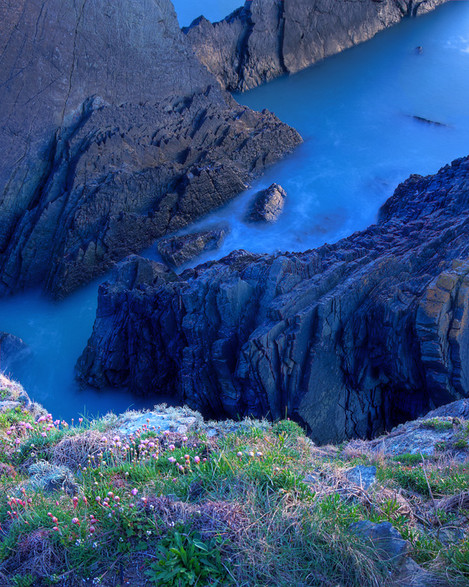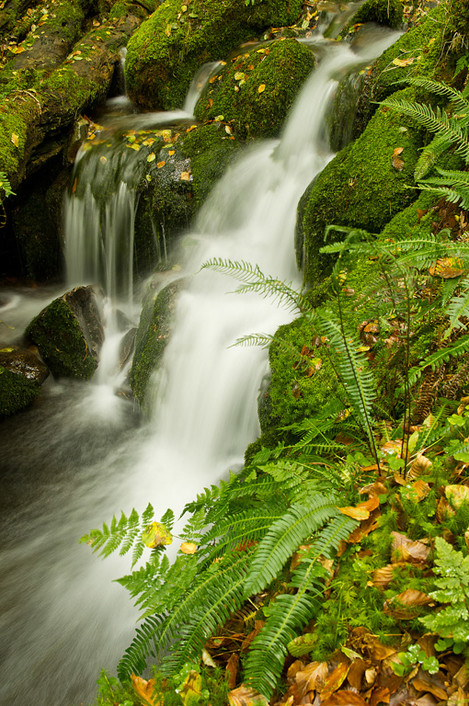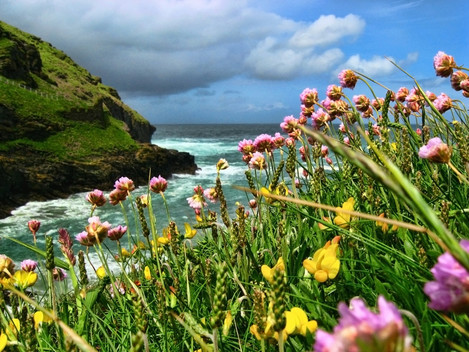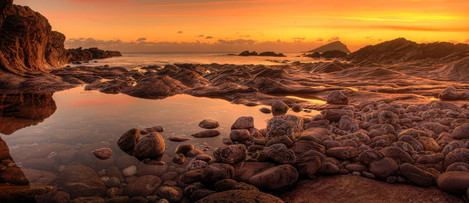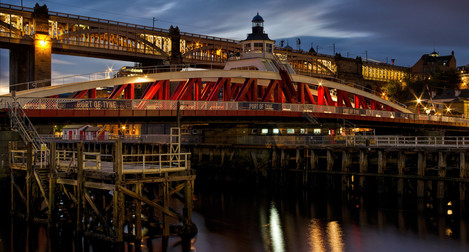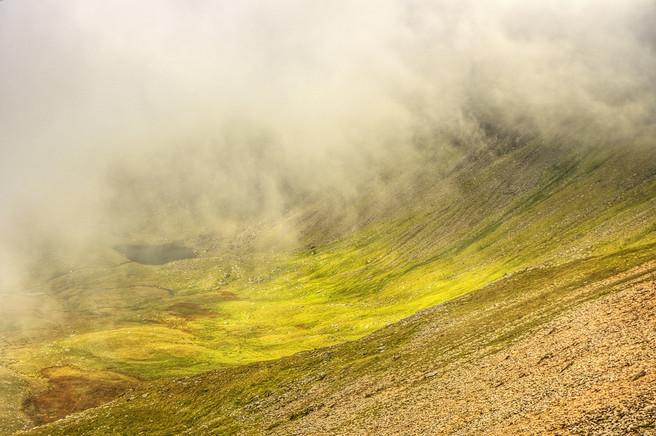Phil Hemsley discusses landscape photography & the study of 'the edge' of things

Phil Hemsley
Photography of the landscape and nature is a passion. I try in my photography to record the atmosphere and ambiance of my subjects - be that the upland landscape of Dartmoor, to photographing wildlife or adventure sports from an 'up close' aspect.
During the week I am a Mathematics Lecturer at Exeter College, and make detours on the way home if the light and weather look promising for some landscape or wildlife photography.
“I want to stand as close to the edge as I can without going over.
Out on the edge you see all the kinds of things you can't see from the centre.”
Kurt Vonnegut, Jr. (American Writer, b.1922)
There is something to be said in landscape photography of the virtues of studying ‘the edge’ of things. Edges bring tension - bold or subtle, intrigue, invitation and often a narrative element to the pictures made there.
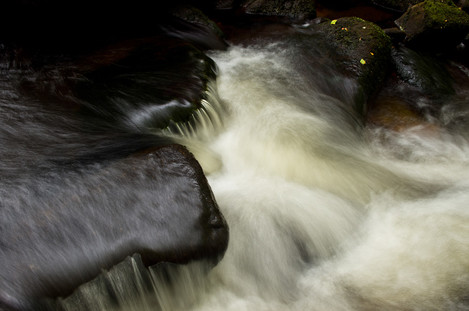
'Aune Chiaroscuro' - an elevated view of one of the many granite ledge waterfalls on River Aune, in Dartmoor National Park
"If we study Nature attentively in its great evolutions as in its minutest works, we cannot fail to recognize the possibility of enchantment — giving to that word its exact significance."
Honoré de Balzac (1799-1850)
The edges of land and water. The coast is a particularly powerful one – we stand on a cliff top or the shore and turn our back to the land, gazing out to the great unknown, humbled by the sheer sense of space & the mystery of what lies beyond.
The photo above is one I really enjoyed making at the end of a grand trip out with friends, walking sections of the coast in the North Devon Area of Outstanding Natural Beauty and making some photographs . It intrigued me how the late ambient afterglow light caught the sea thrift upon the cliff tops and rocks in the dawn below, at Hartland Quay.
The blue twilight hues of the earth shadow above added contrast to the warm tones. Edges, edges, edges – here can be seen the edge of the land; the edge of darkness; the edge of the zone in which coastal flowers grow on this rocky shoreline; the ragged wave pounded edges of a sea bed, tilted by tectonics that caused a long-vanished Alpine mountain range above South West England. Springtime shows us that edge between death of elements of foliage during the autumn and a new lushness. Offspring of flora & fauna emerge, new cloaks of verdance extend upon the edges of branches and regale the creatures who spend time in their company. Fern fronds uncoil to show their fractal edges.
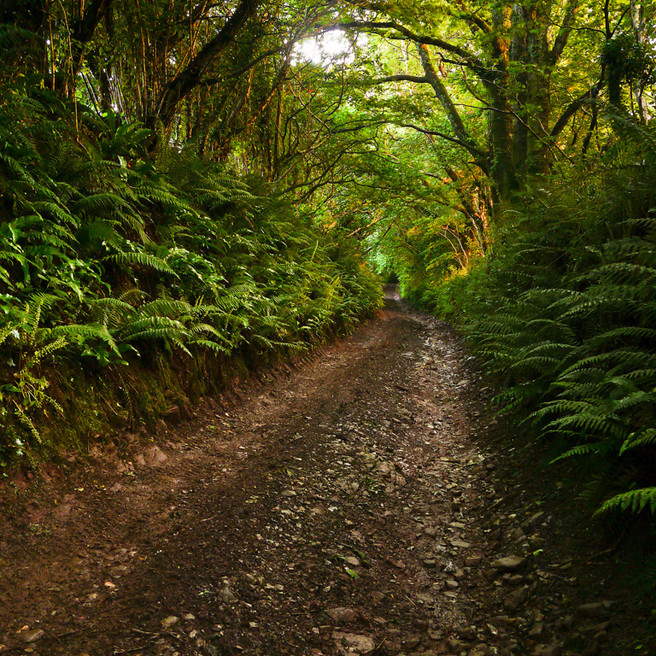
'The Hollow Way' - quartering sidelight, approaching sunset, filters into a hollow way section of the ancient drover's route known as Glazegate Lane, in the South Hams of Devon.
“Behind all seen things lies something vaster; everything is but a path, a portal or a window opening on something other than itself. ”
Antoine de Saint-Exupéry
Autumn gives us a firework fanfare, one that strangely charms us whilst the leaves start to die, a knowledge too that soon this grandeur will fade and the deciduous foliage will be missing from our sight for months, that winter will come soon.
Lone windswept trees, tenacious flowers on moors, fells, mountains and coastlines – the brink of survival against the odds, characterful in their energetic windswept form. The plethora of Sea Thrift (Armeria maritime) on the coastal cliffs thrive on these edges, their carpeting nature and huddling gives the collective some protection the extremes of weather there – a quietly defiant tension of a ‘fight against the odds’.
The edge of day and night is part of the charm of dawn, sunset and twilight photos.
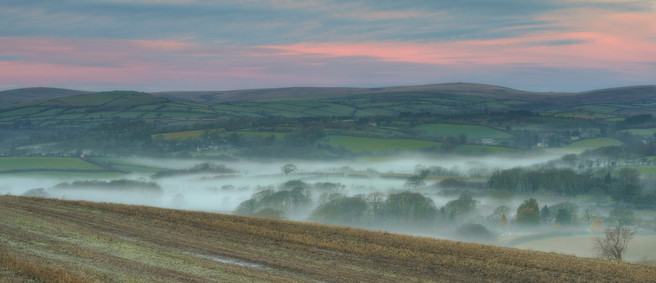
Cloud inversions at dawn below Blakemore Ridge, with Dartmoor beyond. The edge of night and day, the edge of manicured pastoral and rugged moorland.
Afterglow light on high altitude clouds gives us a sense of surprise, that the ‘show’s not over yet’ – if you see high alto-cirrus clouds before sunset, then it is worth the wait of five or ten minutes to see what happens, sometimes the afterglow has more magic than the true sunset (rock pools on rivers and the coast can light up outstandingly in such conditions).
There are many more examples when you stop to consider what boundaries & edges are present at the location - or the effects of season, weather, and/ or light transitions there.
We have only to look at literature to see that often almost palpable tension of the edge of things, a classic being ‘Into The Wild’ - the tale of Christopher Johnson McCandless, the American hiker (a.k.a ‘Alexander Supertramp’), who bravely ventured into the Alaskan wilderness in April 1992 with very little food and kit, with the intention to simply survive for a time in solitude. McCandless unfortunately went too far. I think the quote below sums up his misfortune.
"The Edge... there is no honest way to explain it because the only people who really know where it is, are the ones who have gone over.”
Hunter S. Thompson
If we can imbue some of the essence of what makes these stories so engaging into a visual narrative within our photographic studies, then we can aim to elevate some of our photos beyond 'pretty' to something deeper, more expressive, emotive and resonating maybe? A chance to make photographs about rather than just of something.
Sometimes, things beyond our control come together for a few transient moments – a wealth of edges before our eyes and then something magical can be witnessed. Such things that humble us by the rarity of the cocktail of the elements involved.
But for those of us happy to stand, sit or kneel to peer from the edge, or for a calculated time to step beyond it, the rewards are great.
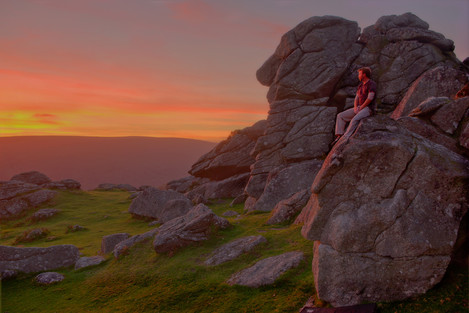
'Eventide' – climber Jon Hawker enjoying the afterglow light from the edge of a plutonic boulder at Bonehill, in Dartmoor National Park
The search for true wilderness in the UK ends only in a handful of offshore islands, but there is a chance for us to connect with many wild places in these wonderful islands for sure. There you will find ‘edges’ in abundance, I guarantee it, if you truly look at what is going on.


